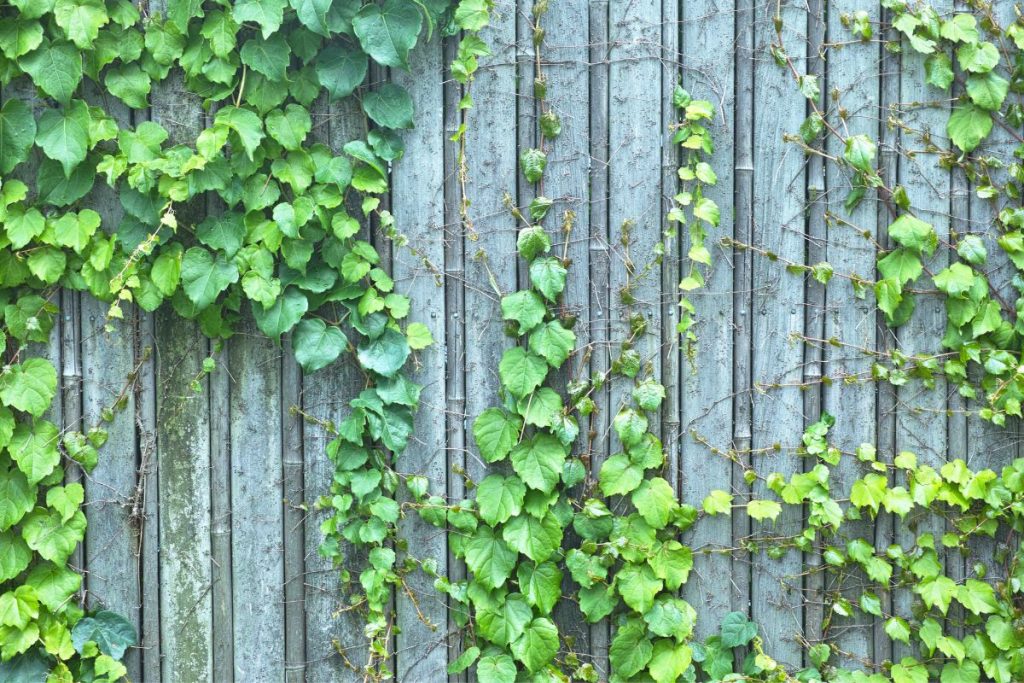You may not have considered it before, but growing ivy on a fence can add beauty and security to your outdoor space. Juxtapose this with the thought of its easy maintenance and you quickly realize that this is an ideal choice for any homeowner looking to upgrade their property. With the right steps, you can learn how to easily train ivy onto your fence in no time, while also being reassured of its safety. Let’s explore how to grow ivy on a fence!

Contents
How To Grow Ivy On A Fence
If you want to grow ivy on a fence, the first step is choosing the right type of ivy. Pick one that’s suited to your climate and will work best with your fence’s material. Once you’ve selected the right ivy, choose an area of your fence that gets partial shade and has good drainage. Then, prepare the fence by cleaning it and using ties or brackets if needed. Finally, plant the ivy near the base of the fence and water it regularly until it takes root.
1. Choose the Right Ivy
Choosing the right ivy is essential for growing on fences, as different types have varying needs and levels of invasiveness. English ivy (Hedera helix) is a popular choice, but it should be avoided if you live in an area where it has been declared invasive. Boston ivy (Parthenocissus tricuspidata) is a safe option that grows quickly and can tolerate full sun to partial shade. Persian ivy (Hedera colchica) has deep green leather leaves and looks beautiful growing on fences; however, it prefers part to full shade. Be sure to research the type of ivy before making your purchase to ensure that you are making a safe decision for your fence-growing project.
Related Post:
Poison Ivy Vs English Ivy
2. Choose the Right Spot
Once you’ve decided on the type of ivy, it’s important to find the right spot for it. Ensure that your fence is receiving plenty of light and is in good condition, as ivy can become quite heavy with time. Don’t let the weight of your ivy cause your fence to collapse; make sure there are no gaps or weak spots in its structure. If your chosen location is too dark, consider another way to cover it or open up the area to more sunlight. Taking these steps will provide a safe environment where your ivy can thrive!
3. Prepare the Fence
Before planting ivy, it’s important to make sure your fence is ready. If the fence is new or recently painted, wait a few months before planting ivy as the paint chemicals may be toxic. For older, weathered fences, clean them with a pressure washer or a mild detergent solution to get rid of dirt, mildew, and moss:
- Pressure wash or use a mild detergent solution
- Remove dirt, mildew, and moss
- Wait at least three months if the fence is new/recently painted
Taking these steps can help ensure your ivy has the best chance for success while keeping you safe.

4. Plant the Ivy
Now it’s time to plant your ivy, so you can get started on the next step in creating a beautiful fence. If you’re using a container, dig a hole that is twice the size of it and place the plant inside. Make sure to firm up the soil around it and give it some water. For cuttings or layering, dig a small hole and put those in as well before firming up the soil and watering them. Planting can be done all year round, but spring or fall would be best when the weather is milder and there is more moisture in the ground. Be sure to take extra precautions for safety while planting your ivy!
How to Train The Ivy to Grow on the Fence
Secure the shoots of your ivy onto the fence until they are established. Make sure to attach the ivy to the fence in multiple places with twine or plant ties for a strong grip. Stretch the tendrils of your ivy beneath both sides of where it’s planted, and weave them around your fence at the bottom:
- To help establish them on your fence
- Secure them until their roots take hold
- And keep weaving up as it grows for added support. Doing so ensures that you can enjoy your lush green wall without compromising safety.
How Fast Does Ivy Grow On A Fence?
Once established, ivy can climb up to nine feet a year, quickly creating a lush wall. It generally takes three months for the ivy to become fully established on your fence, so be patient and watch as it slowly starts to grow. When grown correctly and safely, you won’t have to worry about overgrowth or damage to your fence as the ivy will stay within its limits. With proper care, this process of growth can take place without any problems. You’ll be able to enjoy watching the little vines wind their way around your fence in no time!
Related Post:
How To Make Ivy Grow Faster
Conclusion
You’ve done it! You now know how to grow ivy on a fence. Now all you have to do is sit back and watch your beautiful ivy climb up the fence. On average, ivy grows at a rate of 13 inches per month, meaning that in just one year, you could have an entire wall of lush green ivy. Don’t forget to train the vines for even more coverage! With proper care, your fence will soon be covered in a blanket of lush greenery – what better way to spruce up any yard?
